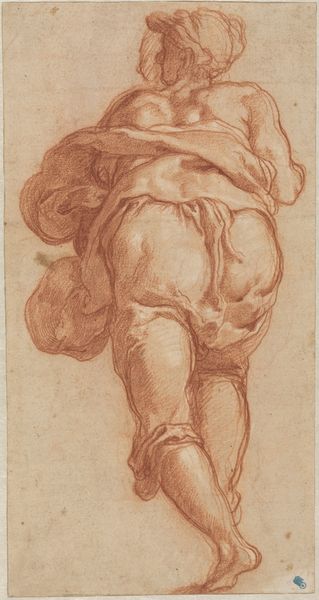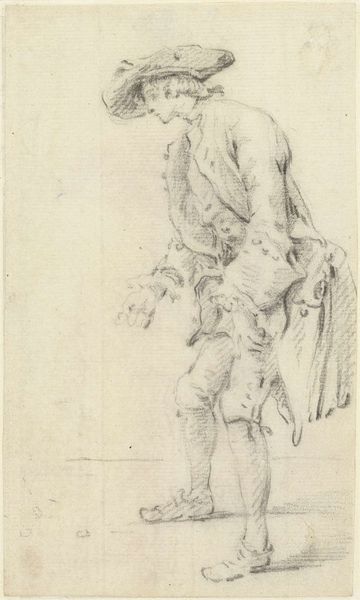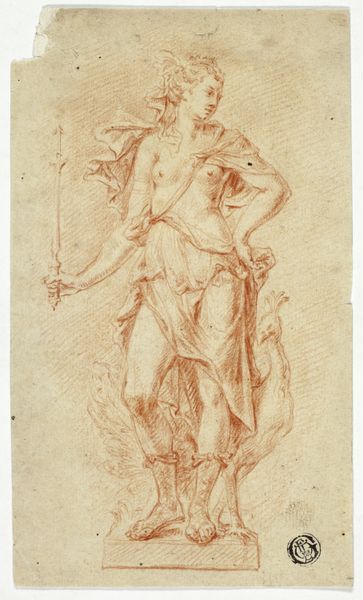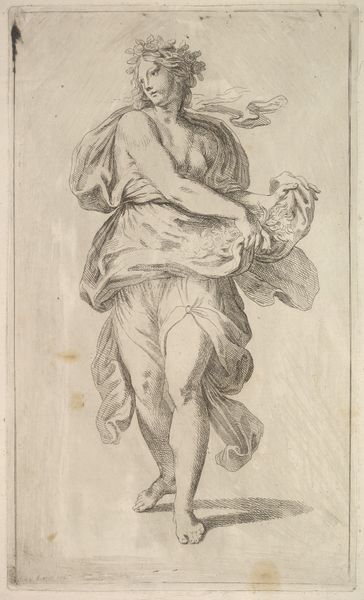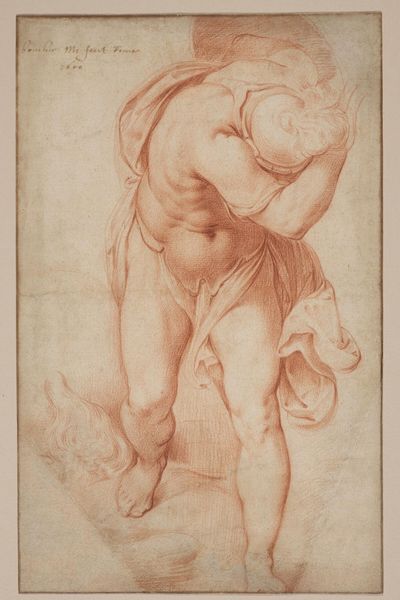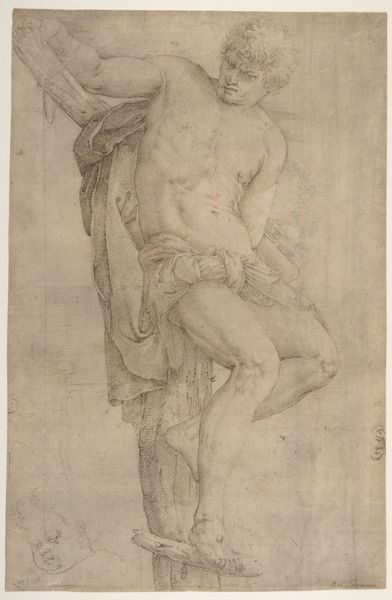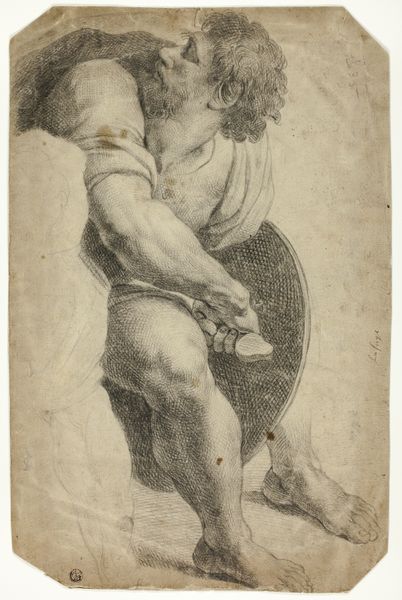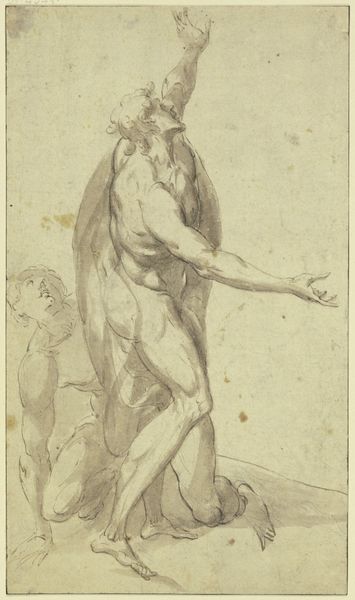
drawing
#
drawing
#
baroque
#
figuration
#
nude
Dimensions: 236 mm (height) x 135 mm (width) (billedmaal)
Editor: We're looking at a red chalk drawing titled "A half-naked, walking man, seen from the back," created sometime between 1626 and 1678 by Karel Du Jardin. It’s a quick sketch, very evocative. How do you interpret this figure, especially his posture and partial dress? Curator: It's interesting how a partial view, seen from behind, carries such potent symbolic weight. Think about the burden of the unsaid, the secrets we carry. This figure, half-clothed, is he moving away from or towards something? Does this image conjure up notions of vulnerability, perhaps even a deliberate exposure of self? The open back, unprotected, can signal a trust...or a painful disregard. Editor: That's insightful. The exposed back really does change the mood. I hadn’t considered that exposure as a choice. Curator: Consider how clothing itself operates as a powerful visual symbol. It offers not just protection, but constructs identity. Stripping away portions suggests a deliberate destabilization of those conventions. Do you get a sense of power, freedom, or perhaps shame, from this exposure? Red chalk itself adds a layer. Does its earthiness enhance the figure’s vulnerability or raw, physical presence? Editor: I initially felt vulnerability, but now, I’m leaning towards a sense of groundedness, like a connection to the earth, emphasized by that red hue. The incompleteness of the attire almost feels like he’s shedding something. Curator: Exactly. Incomplete forms in art, whether architectural ruins or unfinished portraits, hold unique psychological resonance. They symbolize memory, time's passage, and the fragment's inherent beauty, encouraging viewers to project meaning and emotion. This figure seems poised between states. It leaves us with potent ambiguities, questions rather than certainties. Editor: I hadn't thought about it in terms of the power of incompleteness. Thanks for opening up that perspective! Curator: My pleasure. It's in these very ambiguities that art finds its lasting power, offering mirrors to our own fragmented selves and experiences.
Comments
No comments
Be the first to comment and join the conversation on the ultimate creative platform.

